12 Great Places to Retire in the Midwest
Affordability, ample activities and quality health care make these Midwestern cities appealing to retirees.


The Midwest has plenty to offer retirees. Not only is it home to several of the cheapest places to live, but many states in the region also offer beautiful scenery, an abundance of activities and quality health care, along with a low cost-of-living and affordability.
Despite these positive qualities, America's Heartland has not seen a lot of love lately. Among the 12 states that the U.S. Census Bureau groups together as the Midwest region, three — Illinois, North Dakota, and Nebraska — made the list of top 10 states people moved out of in 2024, according to the most recent data released in United Van Lines' annual national movers study.
The area just isn't on many people's radar as one of the best places to retire, although it's definitely worth considering. If you're ready to go against the grain and head to the Midwest for your retirement, we suggest you consider the following spots.
From just $107.88 $24.99 for Kiplinger Personal Finance
Become a smarter, better informed investor. Subscribe from just $107.88 $24.99, plus get up to 4 Special Issues

Sign up for Kiplinger’s Free Newsletters
Profit and prosper with the best of expert advice on investing, taxes, retirement, personal finance and more - straight to your e-mail.
Profit and prosper with the best of expert advice - straight to your e-mail.
Although there may be many, we highlighted just one great retirement destination in each state, taking into account living costs, safety, median incomes and poverty rates for retirement-age residents, as well as residents' sense of well-being and the availability of recreational and health care facilities.
Here are our retirement picks in the 12 Midwestern states. Some (if not all) are sure to surprise you.
The list is ordered alphabetically by state. The 12 states in the Midwest region are classified by the U.S. Census Bureau. See Methodology at the end of the list for details on our data sources.

1. Peoria, Illinois
- City population: 113,672
- Share of population 65-plus: 19%
- Cost of living: 24.4% below the national average
- Median income for population 65-plus: $52,000
- Well-being score: 60/100
- Illinois State Tax Guide
A big draw for Peoria is its affordability. The average home value is only $128,940, compared with the $363,505 average for the U.S. The cost of a private room in a nursing home in Peoria, IL typically ranges from $5,500 to $8,000 per month, depending on the facility and type of services needed, according to SeniorLiving.
As of September 2025, the Downtown Development Corporation of Peoria remains active in promoting construction and development in the area, including providing 714 construction permits valued at $74 million. The Illinois Department of Transportation has invested over $350 million in various infrastructure projects aimed at improving safety and mobility.
The Riverfront area already offers a vibrant setting with several eateries, shops and attractions, including the Peoria Riverfront Museum, complete with its Giant Screen Theater and Dome Planetarium. The museum hosts a senior program with a free bimonthly morning lecture series and free admission to the museum every third Wednesday of the month for guests aged 60 and up. The Peoria Park District offers 64 park sites with miles of hiking trails, golf courses, a nature center and more — perfect for active retirees.

2. Fort Wayne, Indiana
- City population: 262,676
- Share of population 65-plus: 14.9%
- Cost of living: 18% below the national average
- Median income for population 65-plus: $47,000
- Well-being score: 56/100
- Indiana State Tax Guide
The amenities in the Fort Wayne metro area are relatively cheap compared to many places in the U.S.. It's also home to a nice collection of quiet neighborhoods and a thriving arts scene that hosts several festivals and events throughout the year.
The three local rivers — the St. Marys, the St. Joseph, and the Maumee — are a main feature of the area, providing ample opportunities for canoeing, kayaking and cruising. Fort Wayne also has more than 80 parks and 100 miles of hiking and biking trails.
The area is by no means a metropolis, but if you ever feel the need for a small-town escape, head two hours south to Richmond, one of the cheapest small towns in America. Its claim to fame (other than being budget-friendly): Some of the earliest jazz records were recorded in Richmond by such greats as Duke Ellington and Louis Armstrong.

3. Des Moines, Iowa
- City population: 213,545
- Share of population 65-plus: 11.8%
- Cost of living: 13.4% below the national average
- Median income for population 65-plus: $47,500
- Well-being score: 62/100
- Iowa State Tax Guide
For retirees looking to live in a big city on a small budget, Des Moines is a good choice. Affordability is just one reason it made our list. Des Moines also boasts a strong economy and plenty of health care facilities specializing in age-related services.
Besides that, retirees won’t lack for things to do. There are numerous museums and arts venues, including an outdoor sculpture park, a zoo and botanical gardens. There’s even a casino and racetrack in nearby Altoona that hosts annual camel, ostrich and zebra races (sorry, no wagering on these exhibition races allowed).
The average home value in Des Moines is $208,946, compared with the state average of $229,072.
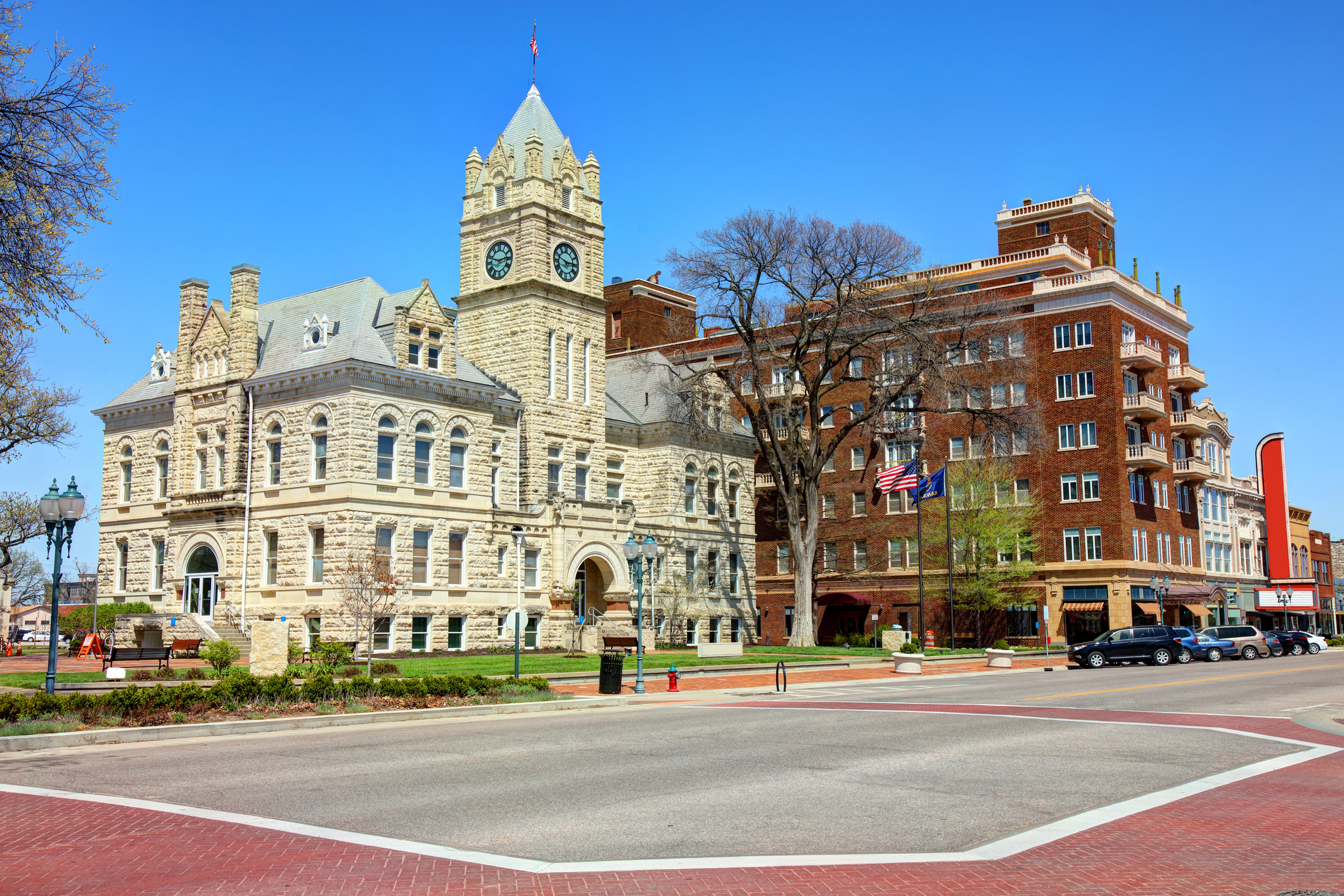
4. Manhattan, Kansas
- City population: 54,794
- Share of population 65-plus: 9.2%
- Cost of living for retirees: 16.6% below the national average
- Median income for population 65-plus: $52,747
- Well-being score: 40/100
- Kansas State Tax Guide
The Little Apple might not have all the bright lights and major metropolitan allure of New York City, but it has plenty to position itself in our top 12 great places to retire. The median income for all households in Manhattan is just $52,747 a year, and the average home value is $283,318 compared with the $239,525 average for the state.
Manhattan, home to Kansas State University, affords residents attractive college-town amenities, including the privilege of calling the school's top-notch athletics program your home team. One particularly senior-friendly offering: Kansas residents who are age 60 or older and are enrolled as non-degree-seeking students can request a waiver of tuition from Kansas State University.
The city is also home to an extensive trail system — including 40 miles of trails throughout the city — for walking and biking.

5. Ann Arbor, Michigan
- City population: 122,731
- Share of population 65-plus: 10.7%
- Cost of living: 5.5% above the national average
- Median income for population 65-plus: $82,000
- Well-being score: 74/100
- Michigan State Tax Guide
Ann Arbor, another college town well suited to retirees, is home to the University of Michigan with all its educational programs, including the Osher Lifelong Learning Institute, sporting events and cultural affairs.
The university also runs the Geriatrics Center & Institute of Gerontology, which focuses on health care issues that come with aging. Along with its research facilities, medical facilities and staff, the Center offers programs and classes to help older adults maximize their good health and independence.
Ann Arbor's health care facilities are top-notch, and the area's public transportation options are another winning attribute for older residents.
A downside, however, is affordability. The average home value is $515,627, vs $257,784 for the rest of the state, according to Zillow.
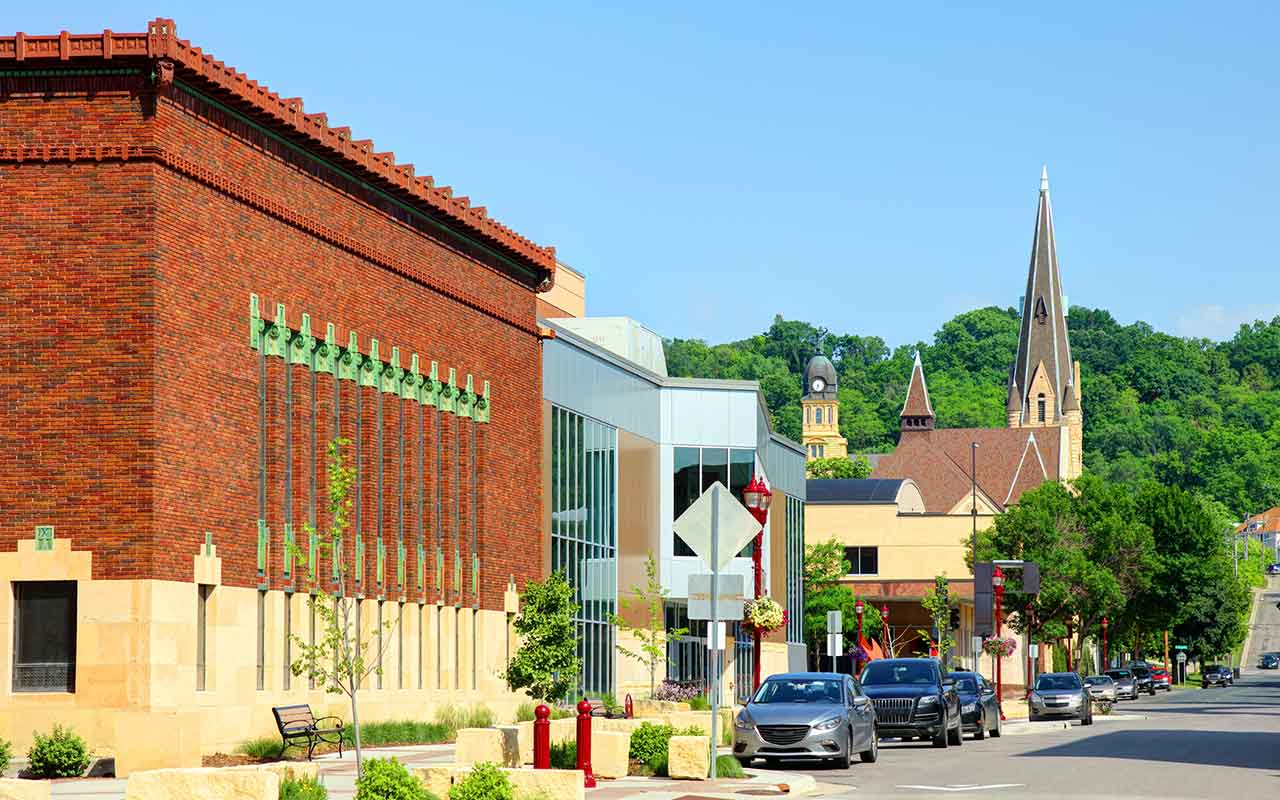
6. Mankato, Minnesota
- City population: 43,938
- Share of population 65-plus: 11.3%
- Cost of living: 13.3% below the national average
- Average income for population 65-plus: $58,500
- Well-being score: 53/100
- Minnesota State Tax Guide
If the cold winters and equally harsh tax situation don't put you off from relocating to the North Star State, consider retiring in Mankato, about 90 miles southwest of the Twin Cities.
It's still a small city, but development is on the rise, and the local economy is growing fast. Revitalization projects have added a nice mix of restaurants, shops, entertainment venues and more to the downtown area in recent years. The city plans to spread that level of development throughout the Minnesota River Valley, partially due to growth at the Minnesota State University at Mankato.
The plan's goals include: adding housing, specifically within walking distance of that campus and where jobs and shops are; expanding Riverfront Park and other recreational land; and possibly building a pedestrian bridge that crosses the Minnesota River to North Mankato. The average Mankato home value is $303,956, which is up 5% over the past year.
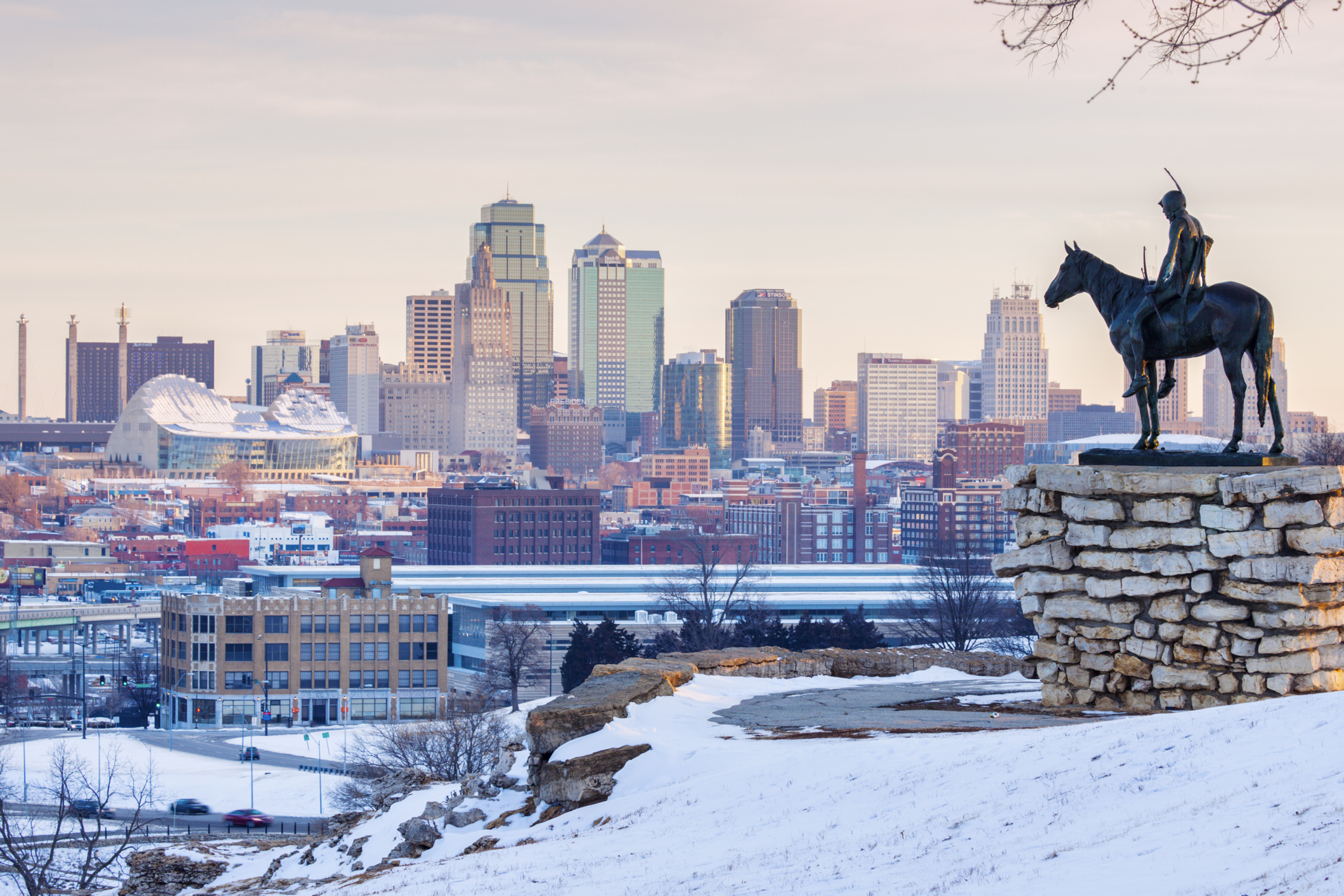
7. Kansas City, Missouri
- City population: 502,597
- Share of population 65-plus: 13%
- Cost of living: 11.6% below the national average
- Median income for population 65-plus: $49,800
- Well-being score: 61/100
- Missouri State Tax Guide
The Kansas City metro area straddles two states and offers a wide range of attractions for people of all ages.
The music and arts scene is particularly vibrant, being the hometown of legendary jazz musician Charlie Parker as well as the American Jazz Museum, the Nelson-Atkins Museum of Art, the Kauffman Center for the Performing Arts and the Kansas City Art Institute.
For foodies, authentic barbecue is big, and you can entertain visiting grandkids with Legoland, the Sea Life Aquarium and the Kansas City Zoo.
The average home value in Kansas City is $247,197, and the median household income is $60,042.
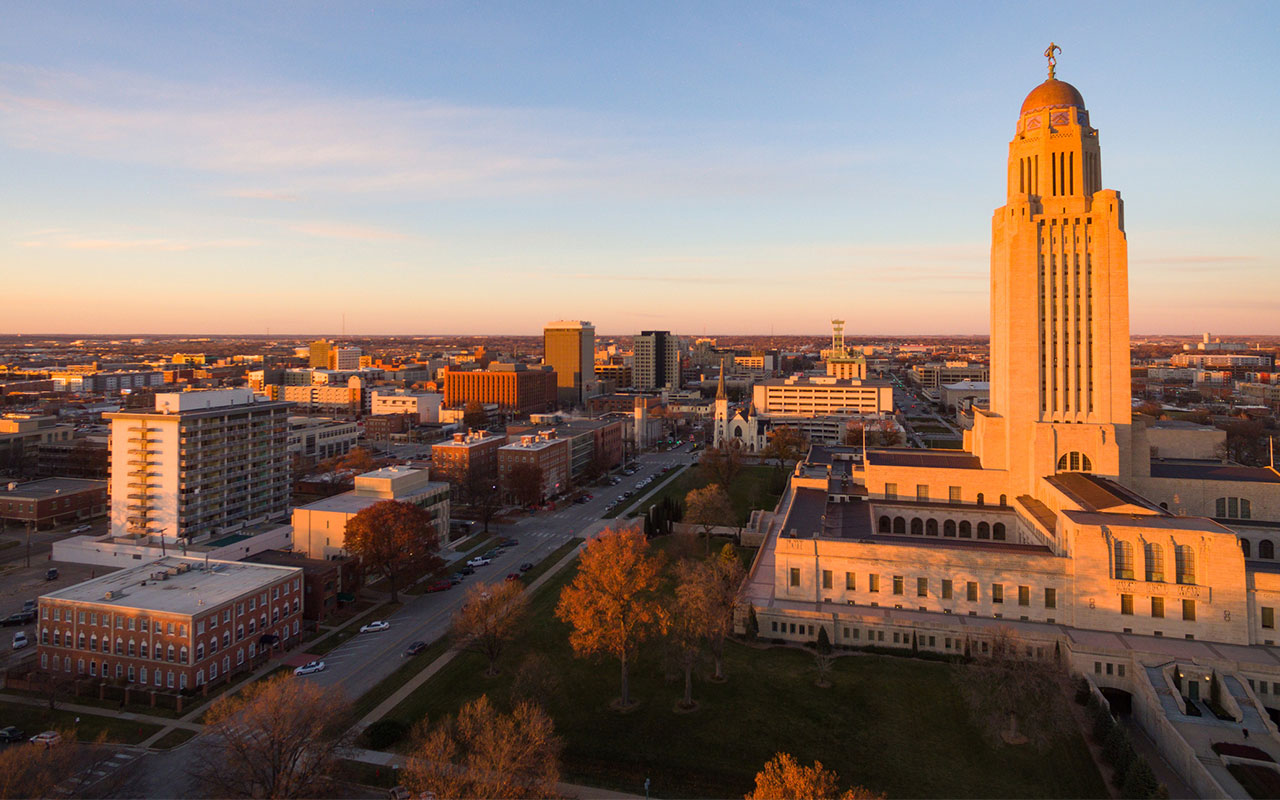
8. Lincoln, Nebraska
- City population: 289,136
- Share of population 65-plus: 11.6%
- Cost of living: 7.4% below the national average
- Median income for population 65-plus: $56,800
- Well-being score: 63/100
- Nebraska State Tax Guide
Lincoln might not be home to financial guru Warren Buffett (Omaha is about an hour north), but it has plenty of other notable points to recommend it. The capital city offers an abundance of attractions, including more than 130 parks, fine restaurants, active nightlife and several museums and theaters.
Highlights include the Sunken Gardens (for budding horticulturalists) and the Museum of American Speed (for car enthusiasts).
Being a college town, home to both the University of Nebraska's Lincoln campus and Union College, the population might skew young. But the city is also prepared to assist its aging residents with 30-plus health care and social service facilities per 1,000 seniors.
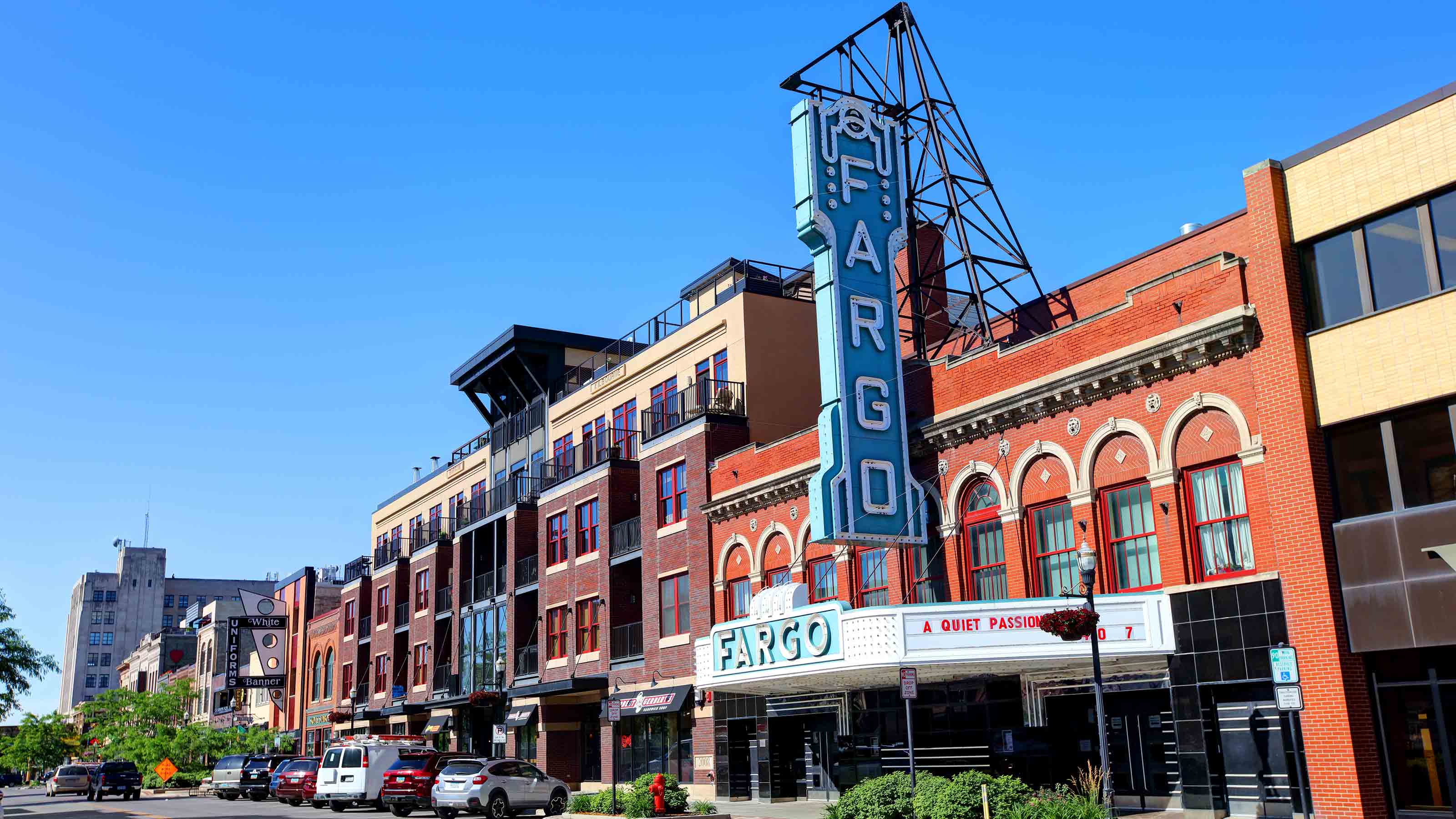
9. Fargo, North Dakota
- City population: 124,979
- Share of population 65-plus: 10.3%
- Cost of living: 9.4% below the national average
- Median income for population 65-plus: $56,900
- Well-being score: 66/100
- North Dakota State Tax Guide
With its low costs and generous tax situation, North Dakota has consistently ranked highly among our best states for retirement.
We believe spending your golden years in the Peace Garden State to be a financially savvy choice for your retirement destination (if perhaps an unorthodox one). The average home value is $315,427, and the average cost of a Fargo nursing home is $9,148 a month in 2025.
North Dakota State University is based in Fargo and, along with several other area colleges, brings attractive amenities for retirees and students alike. That includes sporting events and cultural attractions, such as numerous musical and theater performances.
Be sure to bundle up if you venture out in the winter. The average low temperature in January is minus one degree, with the high only reaching 16 degrees.
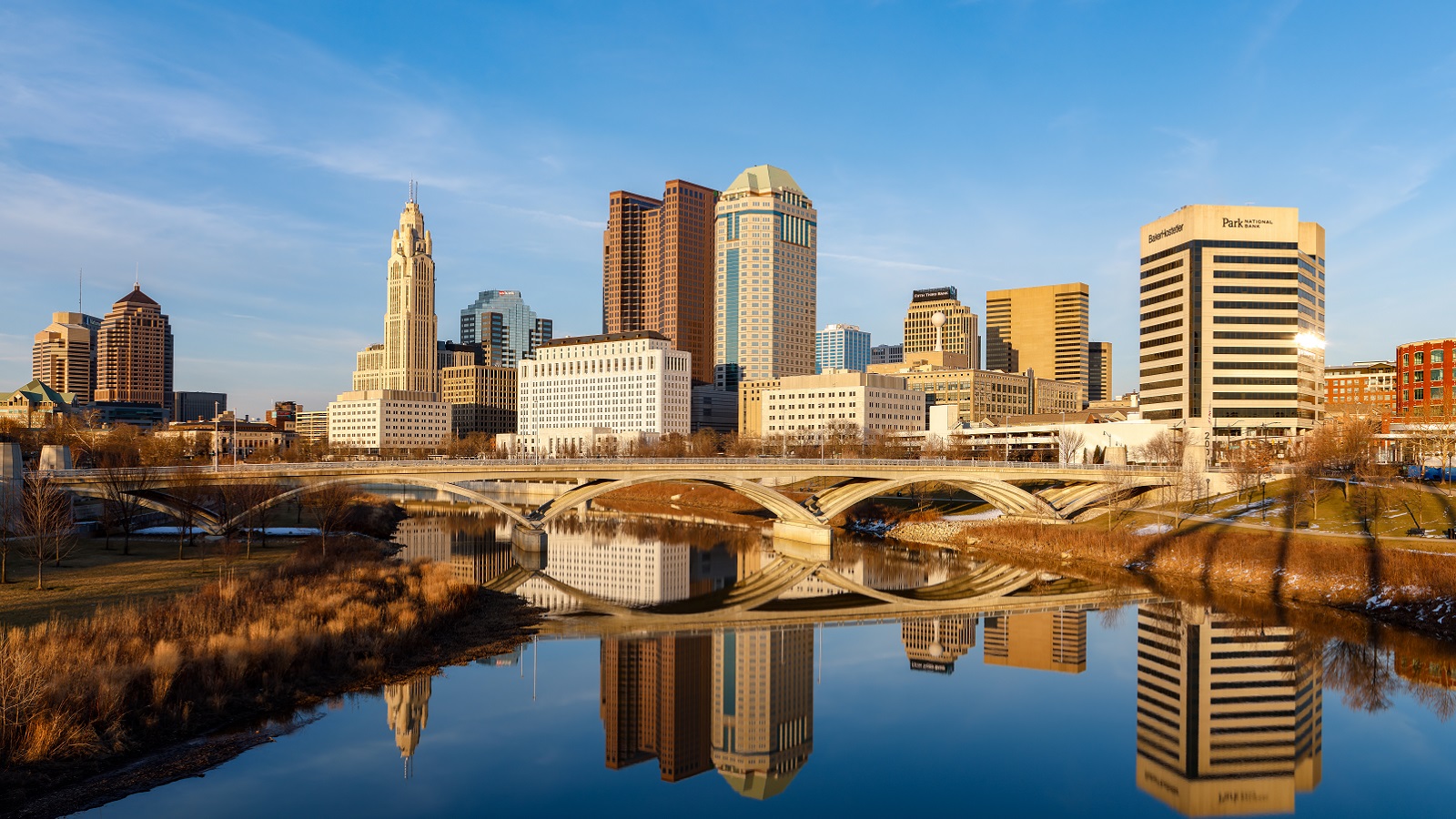
Columbus, Ohio
10. Columbus, Ohio
- City population: 898,143
- Share of population 65-plus: 11%
- Cost of living: 8.6% below the national average
- Median income for population 65-plus: $48,480
- Well-being score: 62/100
- Ohio State Tax Guide
The average home value in Columbus, the state capital, is $248,850, compared with the national median of $363,505. But low costs don't equate to a lack of activities.
Locals can enjoy the college culture of Ohio State University, including big sporting events, concerts and cultural diversions. It also offers Program 60, which invites Ohio residents age 60 and older to take university courses for free.
Off campus, the downtown area has a lively scene with an eclectic mix of shops, galleries and restaurants. The Short North and German Village neighborhoods, in particular, are worth exploring.

11. Sioux Falls, South Dakota
- City population: 189,258
- Share of population 65-plus: 13%
- Cost of living: 9.3% below the national average
- Median income for population 65-plus: $54,000
- Well-being score: 63/100
- South Dakota State Tax Guide
If you've never considered moving to South Dakota in retirement, perhaps you should.
Sioux Falls is a particularly great spot to settle. Not only did South Dakota make our list of 10 most tax-friendly states for retirees, but it also has plenty of other advantages, including a booming economy, low unemployment and hospitals specializing in geriatric services.
For all these reasons, plus the city's recreational activities (including regularly scheduled morning walks and games for the senior program, run by the city's Parks and Recreation department). Sioux Falls also made our list of best cold-weather places to retire, with an average low of just 6 degrees in January. Burrrr.
The average home value in Sioux Falls is $330,864, compared with $315,504 for the state.
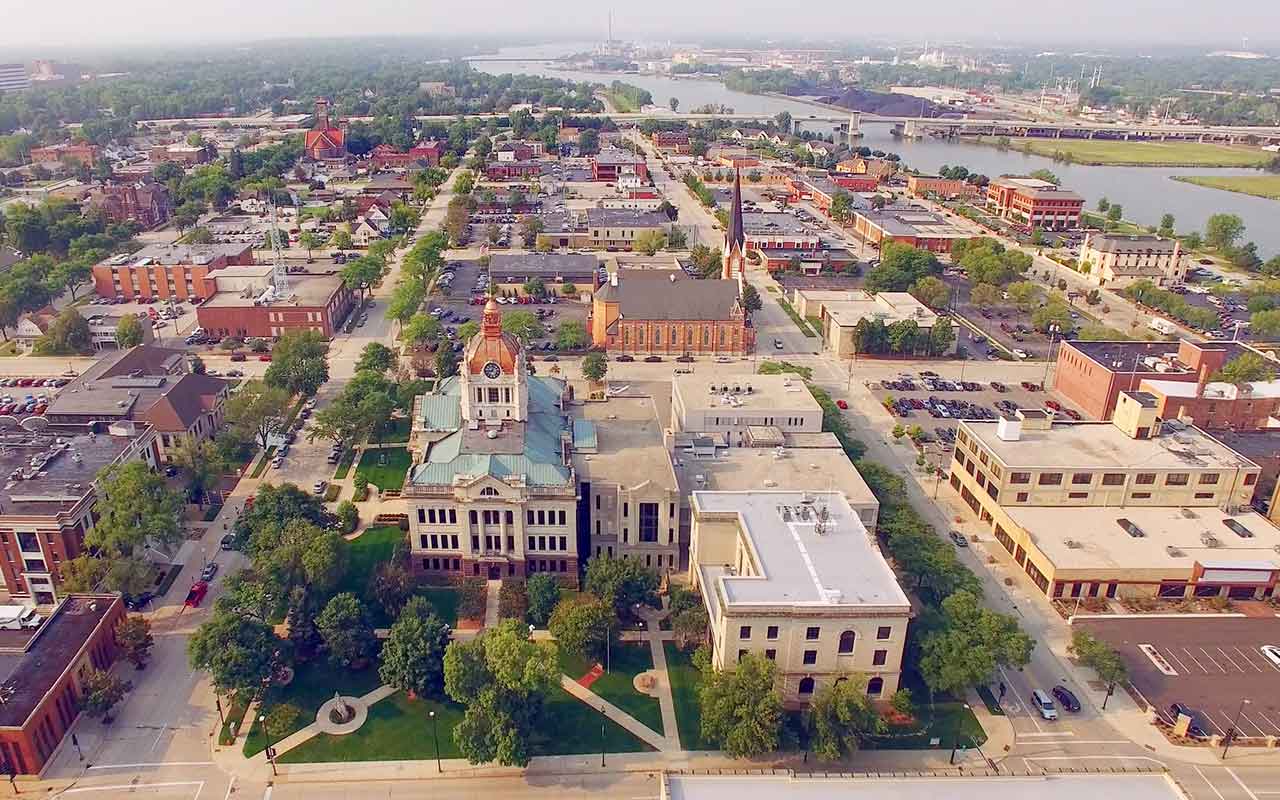
12. Green Bay, Wisconsin
- City population: 107,083
- Share of population 65-plus: 13.8%
- Cost of living: 13.9% below the national average
- Median income for population 65-plus: $47,050
- Well-being score: 60/100
- Wisconsin State Tax Guide
The University of Wisconsin brings all the benefits of retiring in a college town to the industrial city of Green Bay.
In addition to the NFL's Green Bay Packers, the city has a thriving cultural and arts scene, quality medical care, and a walkable downtown with an array of dining and shopping options.
While the state's tax situation leaves something to be desired, low living costs are attractive. Green Bay is particularly affordable — the average home value in Green Bay is just $274,494, compared with $327,261 for the rest of the state and $363,505 for the U.S.

Methodology
To pinpoint great retirement destinations in each state, we weighed several factors:
- Cost of living for major metropolitan and micropolitan statistical areas, provided by PayScale and BestPlaces.
- State well-being index score is provided by digital health company Sharecare, in collaboration with Gallup. The five elements of well-being that make up the overall Gallup-Sharecare Well-Being Index are community, physical, purpose, social and financial well-being. The index is calculated on a scale of zero to 100 and is based on more than 2.5 million nationally representative surveys.
- Population data, including the percentage of the population that is age 65 and older, and the average median income for all households, is provided by the Census Bureau and BestPlaces. The figures are highlighted in these rankings for the benefit of readers, but were not factors in our methodology for ranking the best places to retire.
- Taxes on retirees are based on Kiplinger's state-by-state guide to taxes on retirees.
- Average home prices provided by Zillow.
- Median income for population 65-plus provided by Point2 Homes.
- Nursing home costs provided by Genworth.
Related content
Profit and prosper with the best of Kiplinger's advice on investing, taxes, retirement, personal finance and much more. Delivered daily. Enter your email in the box and click Sign Me Up.

Rapacon joined Kiplinger in October 2007 as a reporter with Kiplinger's Personal Finance magazine and became an online editor for Kiplinger.com in June 2010. She previously served as editor of the "Starting Out" column, focusing on personal finance advice for people in their twenties and thirties.
Before joining Kiplinger, Rapacon worked as a senior research associate at b2b publishing house Judy Diamond Associates. She holds a B.A. degree in English from the George Washington University.
- Donna FuscaldoRetirement Writer, Kiplinger.com
- Kathryn PomroyContributor
-
 5 Gifts the IRS Won’t Tax: Even If They’re Big
5 Gifts the IRS Won’t Tax: Even If They’re BigGift Tax Several categories of gifts don’t count toward annual gift tax limits. Here's what you need to know.
-
 The 'Scrooge' Strategy: How to Turn Your Old Junk Into a Tax Deduction
The 'Scrooge' Strategy: How to Turn Your Old Junk Into a Tax DeductionTax Deductions We break down the IRS rules for non-cash charitable contributions. Plus, here's a handy checklist before you donate to charity this year.
-
 IRS Says You Made a Tax Return Mistake? A New Law Could Help You Fight Back
IRS Says You Made a Tax Return Mistake? A New Law Could Help You Fight BackTax Law Updated taxpayer protections change what the IRS must explain on error notices and how long you have to respond.
-
 What to Do With Your Tax Refund: 6 Ways to Bring Growth
What to Do With Your Tax Refund: 6 Ways to Bring GrowthUse your 2024 tax refund to boost short-term or long-term financial goals by putting it in one of these six places.
-
 What Does Medicare Not Cover? Eight Things You Should Know
What Does Medicare Not Cover? Eight Things You Should KnowMedicare Part A and Part B leave gaps in your healthcare coverage. But Medicare Advantage has problems, too.
-
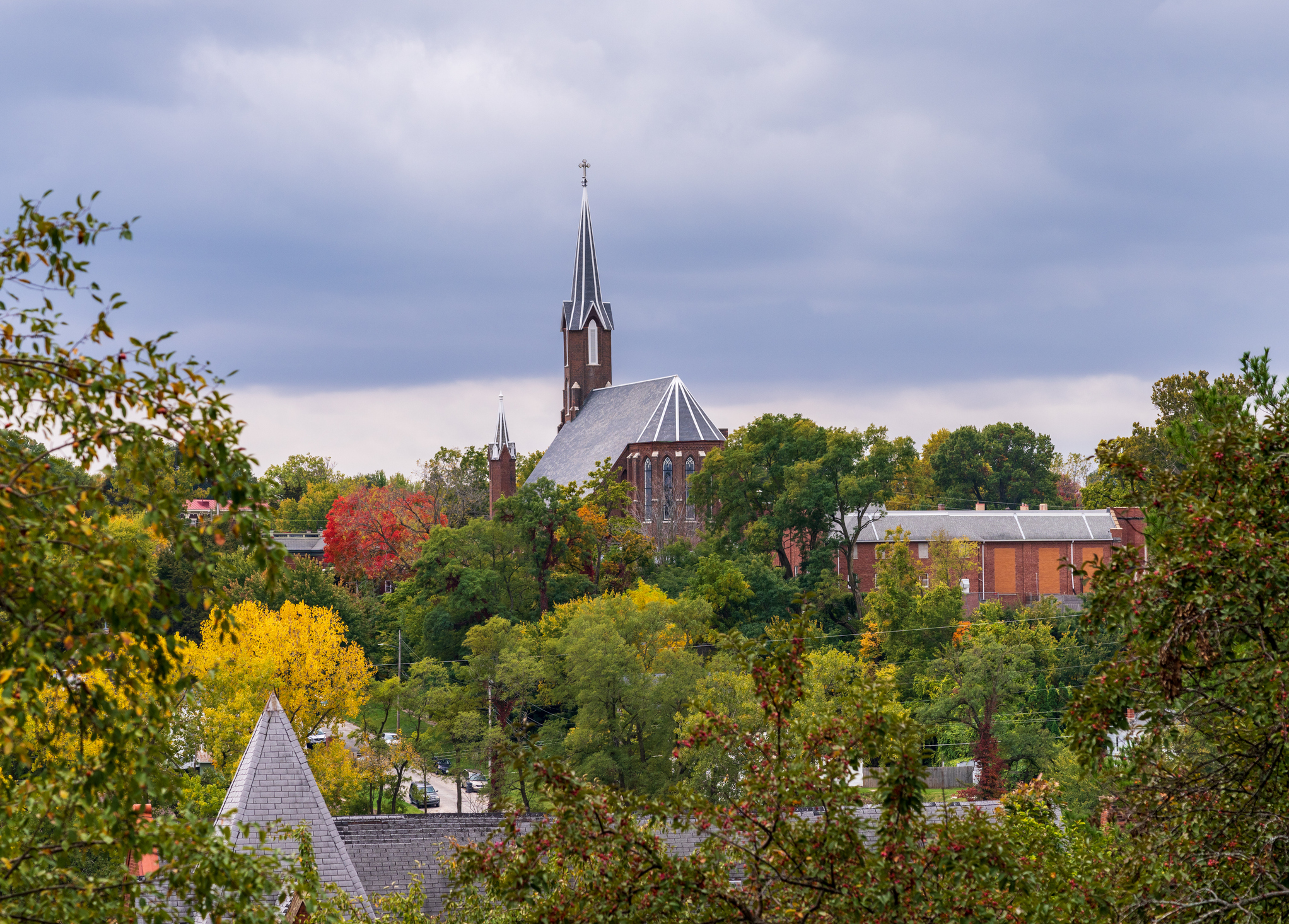 15 Cheapest Small Towns to Live In
15 Cheapest Small Towns to Live InThe cheapest small towns might not be for everyone, but their charms can make them the best places to live for plenty of folks.
-
 Best Cold Weather Places to Retire
Best Cold Weather Places to RetirePlaces to live Some like it hot; others, not so much. Here are the 12 best places to retire if you can't stand the heat.
-
 15 Reasons You'll Regret an RV in Retirement
15 Reasons You'll Regret an RV in RetirementMaking Your Money Last Here's why you might regret an RV in retirement. RV-savvy retirees talk about the downsides of spending retirement in a motorhome, travel trailer, fifth wheel, or other recreational vehicle.
-
 The 24 Cheapest Places To Retire in the US
The 24 Cheapest Places To Retire in the USWhen you're trying to balance a fixed income with an enjoyable retirement, the cost of living is a crucial factor to consider. Is your city the best?
-
 The Six Best Places to Retire in New England
The Six Best Places to Retire in New Englandplaces to live Thinking about a move to New England for retirement? Here are the best places to land for quality of life, affordability and other criteria.
-
 Estate Planning Checklist: 13 Smart Moves
Estate Planning Checklist: 13 Smart Movesretirement Follow this estate planning checklist for you (and your heirs) to hold on to more of your hard-earned money.